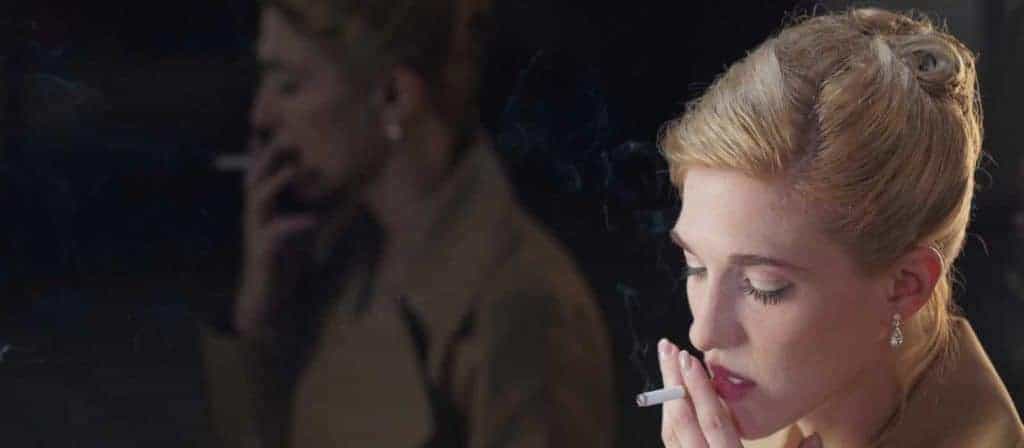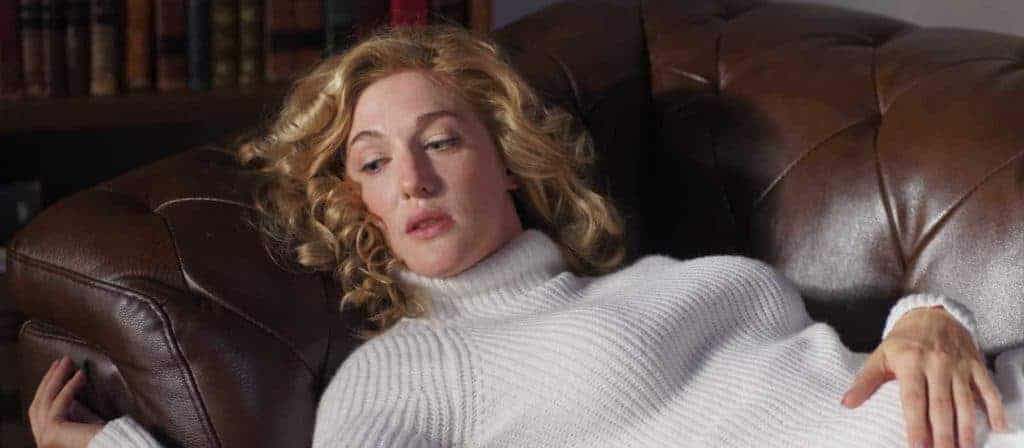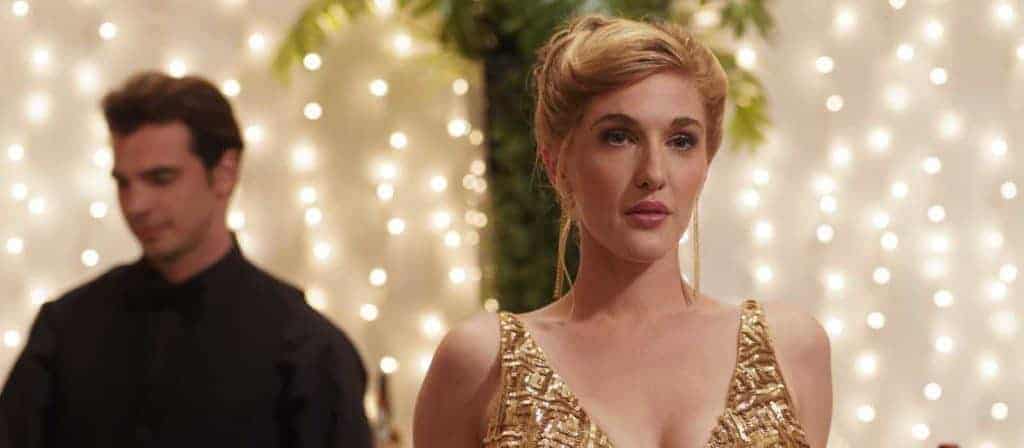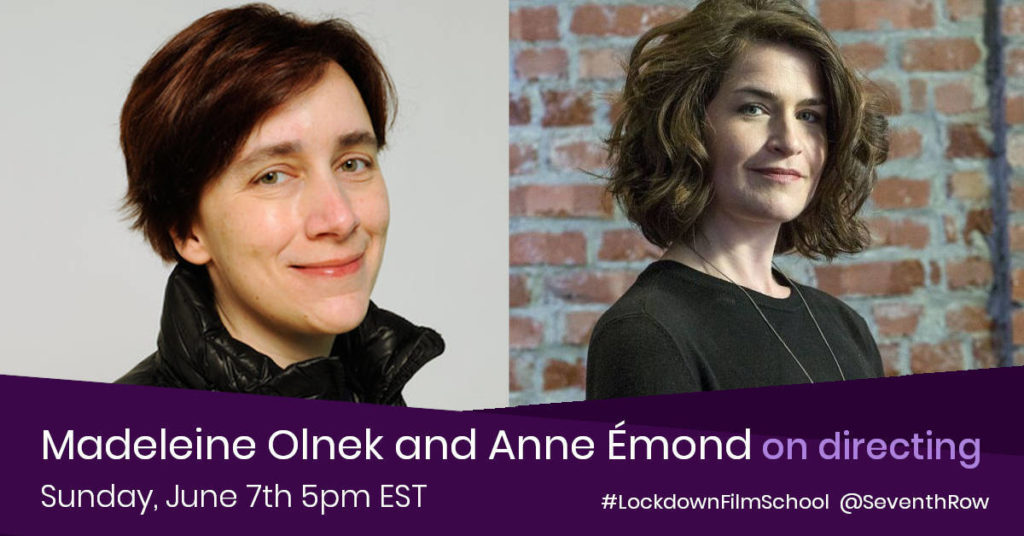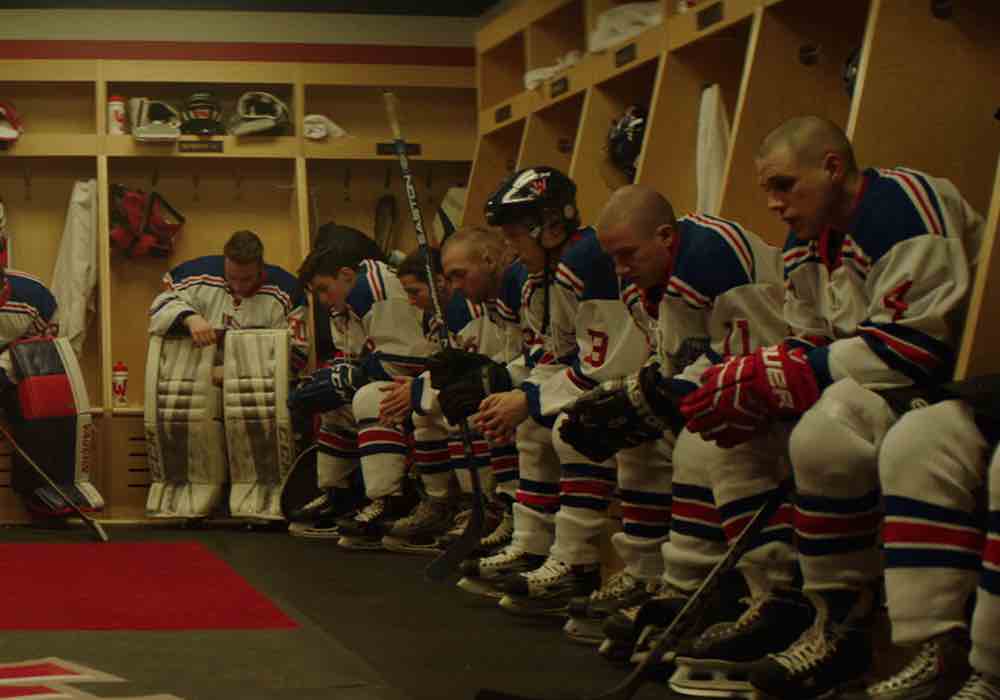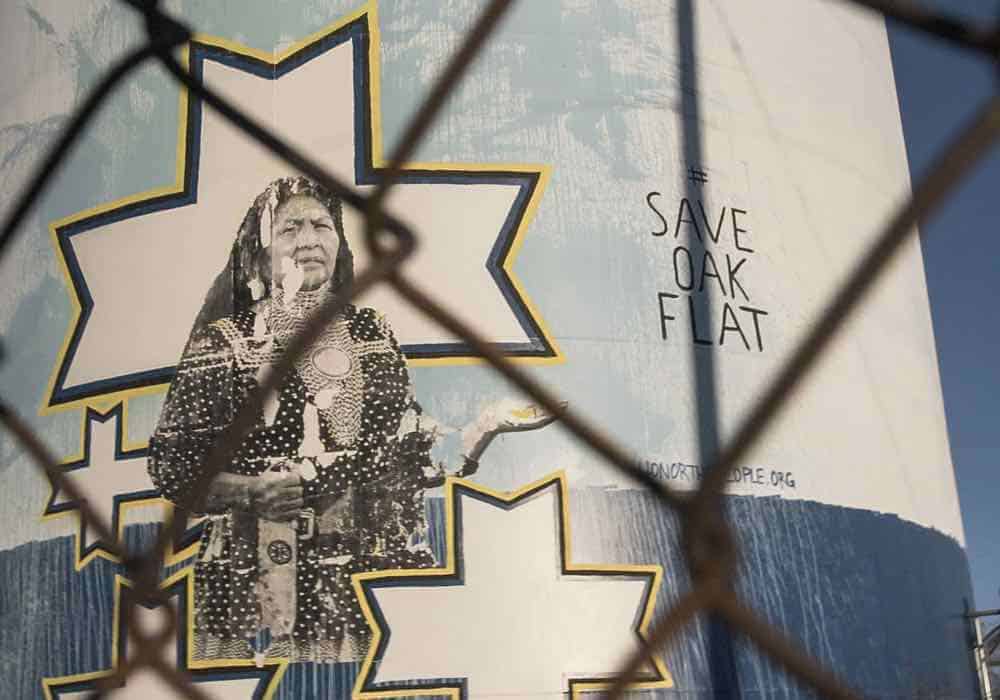Writer-director Anne Émond discusses her unconventional Nelly Arcand biopic, Nelly, which was selected for Canada’s Top Ten of 2016. The film opens January 20 in Canada.
With just three feature films under her belt, Québécois writer-director Anne Émond has already distinguished herself as one of Canada’s best filmmakers. Her first film, Nuit #1, about one night in the life of a new pair of lovers, won the prize for Best Canadian Feature at the 2012 Toronto International Film Festival. Her sophomore film, last year’s Our Loved Ones, was a beautiful look at cycles of suicide in a family, seen through the lens of a father and his daughter. And now, her third film, Nelly, which will screen at Canada’s Top Ten Film Festival this week before opening in cinemas, has landed her a place on Canada’s Top Ten for the second consecutive year.
Based on the life of Nelly Arcand (Mylène MacKay), Nelly is a gorgeous, tactile, stylized film about a woman who was in a constant state of performance, obsessed with how people saw her. She started out as a sex worker, then became a famous novelist, but remained incredibly insecure despite her success. Jumping around in time, Nelly is an impressionistic look at the life of a woman who played the part of many women. When the film premiered at the Toronto International Film Festival in September, I sat down with Émond to discuss the film.
Read more: Anne Émond talks Our Loved Ones >>
Seventh Row (7R): What got you interested in this story?
Anne Émond (AÉ): Nelly Arcand is a very, very well known writer in Quebec and in France. She published four novels in one of the most important publishers in France. I used to be a fan. I’m younger than her. When I was 20, 21, I used to read all the novels when they were coming out. It was good writing. I think she’s a genius. She writes very, very well.
I was kind of annoyed by her a little bit because she had a very strange vibe in interviews. In fact, she moved me and she annoyed me in the same interviews. She had fake, blonde hair, fake botox lips, and fake huge boobs. She was so nervous and shy. She had a very strange public image. And I was like, why do you do that?
I was curious about the character. I had this feeling that she had a very dark and very painful life. She finally committed suicide at 36 years old. I hadn’t even met her, and I cried as if she were a sister when I heard the news. I felt so close and so sad. I felt like, “Wow, you’re a beautiful woman. You’re a great writer. You have everything, and you do that at 36 years old?!” I was angry and sad at the same time.
[clickToTweet tweet=”I imagined something maybe less true, but closer to the character—more chaotic, more over-the-top.” quote=”I imagined something maybe less fact, less true, but more close to the character — more chaotic, more free, and more over-the-top.”]
I wanted to make something about her. I worked on the script. I re-read all the books. I met all the family, ex-boyfriends, friends, psychiatrists — everyone. I started to write a script. It took me one year. It was a standard biopic. I read the script, and it was so boring. After one year, I was like, “Ugh, that’s the worst story ever!” I was nervous. I burnt the script, and I started over again. I imagined something maybe less fact, less true, but more close to the character — more chaotic, more free, and more over-the-top.
7R: Where did you get the idea to jump around in time in the film?
AÉ: To me, in this film, there was no time. It could be anywhere, anytime. It’s just a confused woman. It’s four women in one. I don’t care when is it, where is, or which book did she write at which time. There are no dates, no clues about that. It’s not important to me, because it’s about a woman in different states.
[clickToTweet tweet=”To me, she’s like the sex bomb. She needs to be the most desired woman everywhere she goes.” quote=”To me, she’s like the sex bomb. She needs to be the most desired woman everywhere she goes.”]
For Nelly The Writer, in the office, we were thinking about Virginia Woolf a lot. For the toxic lover, we were thinking about Amy Winehouse. When the Nelly we see in the film is Nelly The Star, The Sex Symbol, she wears Marilyn Monroe outfits. To me, she’s like the sex bomb. She needs to be the most desired woman everywhere she goes. I watched everything that Marilyn Monroe used to wear. I asked two designers from Quebec to create dresses, and I showed them pictures of Marilyn Monroe. Marilyn Monroe also used to wear white pants with a turtleneck, like Nelly does.
Read more: Gillian Armstrong talks Women He’s Undressed and Orry-Kelly’s costumes >>
It’s ageless, in a way. It’s about a woman. Through centuries, we’ve had artist women like this, with a lot of talent, but complex and sad, with a dark destiny. It’s a movie about all those women, those artists.
7R: How did you approach creating the film’s stylized aesthetic?
AÉ: My two previous films were so naturalistic. This is my most aesthetic film. It needed it. I didn’t want to make a fashion show, but in a way, this film is about appearance. She was obsessed with that. Everything had to be kind of nice. Even the trashy parts, when she takes cocaine at the party with the boyfriend, even that is beautiful. But in real life, when you take cocaine at four in the morning, it’s not that nice! It’s ugly! You’re ugly, and the sun is ugly, and you’re waiting for the dealer. It’s not a nice life. But in my film, because it’s about a woman who fantasizes her own life, I wanted everything to be over-the-top and beautiful until it breaks down, until it’s too much.
[clickToTweet tweet=”You never know what’s true and what’s not true, what’s happening in her head, in her writing.” quote=”You never know what’s true and what’s not true, what’s happening in her head, in her writing.”]
She never had that beautiful, golden dress. It’s not the truth, this film. But it’s a lot of fantasy about someone writing her life. Because that’s what she did. She wrote very autobiographical novels, but so false. When you read the books, it’s not all true. She invented a lot. It’s fiction. It’s inspired by her life. I think that’s what the movie is. You never know what’s true and what’s not true, what’s happening in her head, in her writing, or in my head as a writer. It’s a chaotic film.
I think there is emotion in the film. I think we care for the character. But it’s more cerebral. I don’t think you cry at the end. I’m not sure. But I think you’re more fascinated by the character but maybe not that emotionally. It was not that hard, because, to me, to talk about her in a chaotic way, was much more true to her. I know what it is to be jealous, to be heartbroken, to have bad reviews. I could put a lot of myself in those scenes. I hope I’m not that extreme. I’m not that crazy. But I think I know what she experienced.
Read more: What do we mean when we talk about Canadian cinema in 2015? >>
7R: How did you think about the gaze in the film?
AÉ: She was obsessed by how she looked. Sometimes, I think I’m obsessed with that. But, it’s nothing. I don’t really care! It was an important part of her life. I’m pretty sure that she killed herself because she was aging, and she didn’t want that.
[clickToTweet tweet=”There’s a lot of shots where, as a viewer, you look at her looking at herself.” quote=”There’s a lot of shots where, as a viewer, you look at her looking at herself, or you look at people looking at her.”]
I wanted to give a big place to the viewers in the film. There’s a lot of shots where, as a viewer, you look at her looking at herself, or you look at people looking at her.
There is an important shot, to me, when she’s writing, near the end of the film, and we look at her from behind. The camera pulls back far from her to reveal the couch behind her. It was really important to me because the couch is you at the theatre looking at her. There’s a lot of this kind of shot in the film. It was her obsession with how people — men, women, the public, critics, editors, clients, because she’s been a sex worker — saw her. She would live through other people.
Read more: Review: Anne Émond’s Our Loved Ones >>
7R: The opening shot of the film is in an auditorium, where you see the audience, and the camera pushes in on Nelly as a young girl, lip syncing on stage. She starts singing along, and the audience looks unhappy and shocked.
AÉ: To me, the film is all in this shot. It’s a pretty long shot. It’s a two-minute-dolly-in. It starts out black. You don’t see anything. You just hear people talking. It’s kind of frightening because it’s like people are talking behind your back, about you. When she arrives, and she finally sings and screams — it’s too much. I have the feeling that this woman understood very, very young that she could not be completely herself in this society. That it would not be accepted. Maybe, it’s just because of her, her demons, not the society.
[clickToTweet tweet=”This woman understood very, very young that she could not be completely herself in this society. ” quote=”I have the feeling that this woman understood very, very young that she could not be completely herself in this society. “]
It’s about a character who needs validation in everything. She needed validation as the best sex worker and the best writer. How can you continue to live with these needs? You can’t do all at the same time in one life. And she needed to be the best in everything, but that’s just impossible. I think that’s what killed her, in a way.
Read more: Bronwen Hughes talks Journey is the Destination >>
7R: How did you think about showing Nelly’s sex work on screen?
AÉ: I asked myself a lot of questions about how to show the prostitution in the film. I want to show things, but I don’t want to show too much. I think there are sexy parts in the film, but it’s not supposed to be a sexy movie. It’s a tragic story. It’s sexy sometimes, but the scene after, you feel guilty about the sexiness, because it’s so sad.
I learned a lot about prostitution, and I met some sex workers, in my research. I learned that most of the clients would be 75 years old and up, or very, very obese. I did casting, and I couldn’t go there. It was just too much to see this beautiful young woman with a 75-year-old man. It was a little bit sensationalist, a bit too shocking.
The camera is kind of far away, and we just watch them doing their thing like a zoo. I didn’t want to be in a pornographic mode, at all. But I didn’t want to be boring.
We show more of the body when she’s not having sex. We show the body when she’s in love with the boyfriend. It’s not a good relationship, but it’s love.
Read more: What does Canada’s Top Ten of 2016 say about Canadian Cinema? >>
